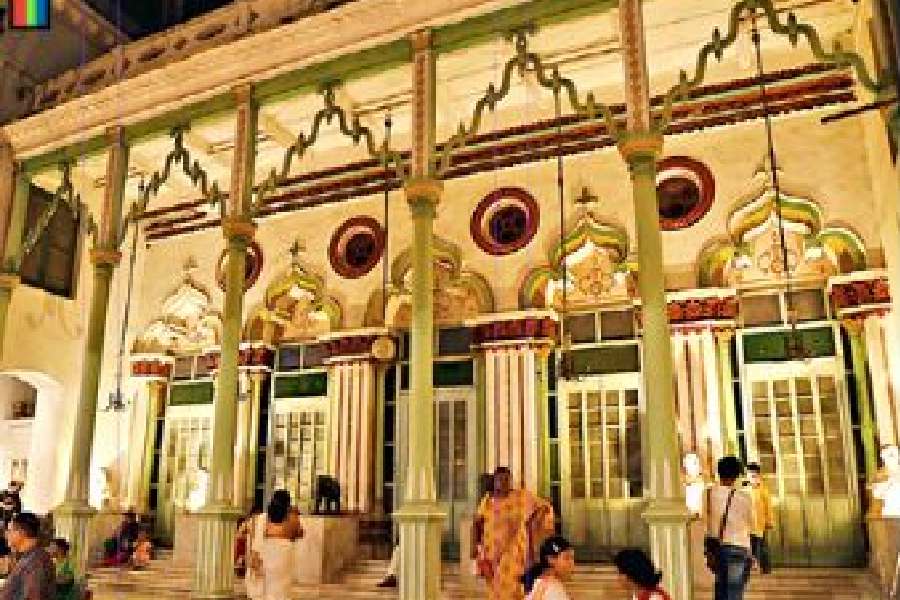A Durga Puja that replaces rituals with a celebration of the arts is back with its second edition.
The celebrations began on Mahalaya evening as the majestic courtyard — decked up under the lights — of a 139-year-old palatial north Kolkata home turned into a grand theatre.
Tagore songs, a dramatised representation of Sukumar Ray’s Abol-Tabol, puppet theatre and a story-telling session for children marked the Mahalaya celebrations, titled Anandamela.
The blowing of a singa (a musical instrument from the pipe-horn family, which was earlier blown to signal the onset of war) and the beats of a nagara (a traditional percussion instrument) signalled the beginning of the festivities, which will continue from Saptami to Dashami.
Thakurbarir Sarodotsav, billed as an autumnal performing arts festival, started last year at Tagore Palace on Prasanna Kumar Tagore Street in Natunbajar.
This puja does not have rituals. Instead, the offerings to the goddess are in the form of music, dance and the arts.
“Organising a Puja like this takes a lot of effort and resources. I was very drained after last year and thought I would not be able to continue it. But it was the enthusiasm of so many people associated with the Puja that made me change my mind,” said Souraja Tagore, 39, the main organiser.
Souraja, a Bharatnatyam dancer, is a descendant of Darpanarayan Tagore. His brother was Nilmani Tagore. The Tagores of Jorasanko are the direct descendants of Nilmani. The most famous Tagore, Rabindranath, is the great grand uncle of Souraja. The two are five generations apart.
The pupils at Koothambalam, a Bharatnatyam institute that Souraja runs at her family home, were instrumental in changing her mind.
“We treat the Goddess as the noblest member of the audience. Like last year, she will keep a keen eye on our performances,” said Souraja.
At Tagore Palace, a sitar recital by veteran artiste Mita Nag, the daughter of sitar maestro Manilal Nag, and a performance by Uttam Das Baul will be the highlights of Saptami.
A play on the life of Chaitanya, the 15th century saint and reformer, will be the final act on Ashtami.
The festival is being co-curated by Daakghar, a music platform headed by Rabindrasangeet artiste Manoj Murali Nair.
“Maintaining a tradition is more difficult than starting it. That way, organising this year’s Puja is more daunting than it was last year,” said Nair.
“I think an inclination to the arts is part of the distinct Bengali identity. That identity is somewhat endangered by the rise of the corporate pujas. That identity needs preservation.”
Kobi Gaan (a contest of minstrels, a folk-music tradition of Bengal) by Dulali Chitrakar is among the top draws on Navami.
As there is no ritual, the puja will not have a formal immersion ceremony. The idol that was used last year is being reused, with minor touch-ups from the same potter, this year.
Instead, the organisers have planned an Ananda Yatra, a procession playing Tagore tunes accompanied by instruments like khol and mandira.
